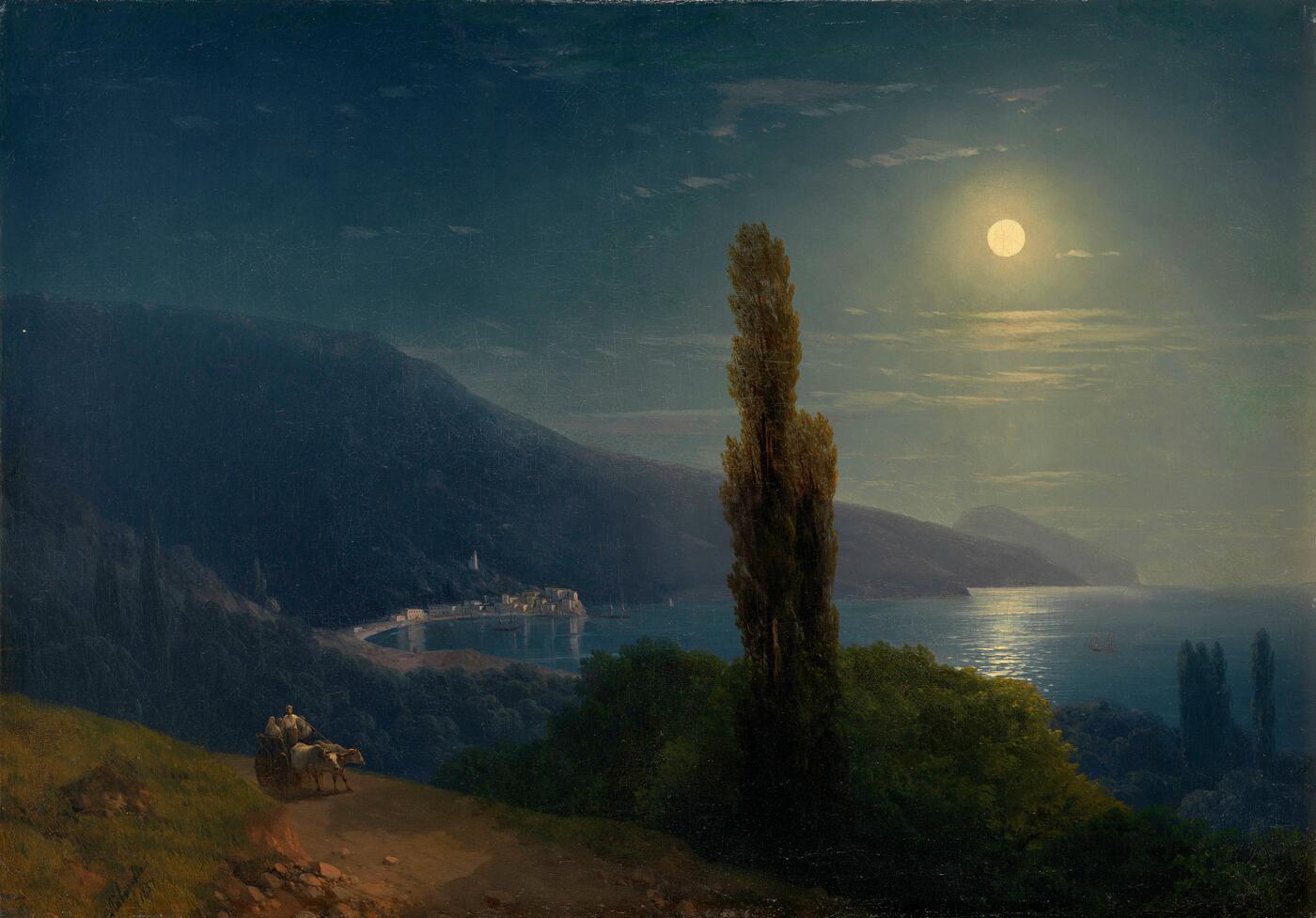25 - 28 November 2012 Russian Art Auctions
25 November 2012

20. AIVAZOVSKY, IVAN (1817–1900)
Moonlit Night, Crimea, signed and dated 1859.
Oil on canvas, 56 by 80 cm.
Sold Privately
Provenance: Collection of Abraham Djindjian, Paris.
Collection of Michel Tchaloyan, Paris.
Private collection, Europe.
Authenticity of the work has been confirmed by the expert V. Petrov.
The present work has been examined by Gianni Caffiero and Ivan Samarine and has been entered under number CS-1859-006 into their catalogue raisonné for the artist.
Exhibited: De l’Arménie à Montmartre, Musee de Montmartre, Paris, 4 April–24 June 2007.
Moonlit Night, Crimea is enitrely characteristic of Aivazovsky’s work of the late 1850s when he was enjoying real celebrity in Europe. At that period each new canvas elicited a rush of public approbation and the master had to repeat well-known works, with variations, in response to commissions.
The artist turned particularly frequently to portrayals of the Crimean shores where he lived and found inspiration throughout the whole of his long and productive life. The calm, dreamy southern nights filled with a ghostly moonlight that he painted here were every bit as successful as his shipwrecks and storms.
With its particular, captivating peacefulness and the perfection of its painting technique, Moonlit Night, Crimea develops a compositional model Aivazovsky had hit upon in the 1840s: the moonlight breaking through above the clouds, the essential moon glade on the water painted in impasto, the expressive silhouettes of cypresses and sailing boats hurrying to shore allow the artist to create a striking scene, tinged with Romantic mystery and emotion. Moonlit, evening-time Yalta is already asleep, snuggling up to the dark mass of Ayu-Dag in the background and an ox-cart, barely visible in the foreground, is still transporting its passengers along the coast. This prosaic genre motif acquires a poetic resonance under the faltering rays of the moon and is here integral to the mellifluous beauty and harmony of the world.
The organic coexistence of both genre and landscape elements and the delicate and affecting colour scheme based on a refined grey-blue palette serve to express an ideal of living with nature. Pictures of this type which seamlessly integrate a knowledge of nature with Romantic idealisation are absolutely typical of Aivazovsky’s work of the mid-19th century. It comes as no surprise that another Moonlit Night, Crimea, also painted in 1859, has pride of place in the Russian Museum. In this work Aivazovsky develops the same, familiar format: the silhouette of a cypress marking the centre of the composition, the sea bathed in moonlight against a background of rocks, the coastal buildings of Alushta barely distinguishable in the darkness and, in contrast, a prosaic rural dwelling in the foreground which reinforces the sense of abundance of this world’s blessings.
The Yalta panorama captured in Moonlit Night claimed Aivazovsky’s attention for many years, and his oeuvre includes a good few canvasses painted from almost the same viewpoint, both before our picture (On the Road to Yalta, 1848; Yalta, 1848) and after it (Night in the Crimea: View of Ayu-Dag, 1859; Moonlit Night: Outskirts of Yalta, 1863; Crimea View: Ayu-Dag, 1865; Sunrise on the Coast at Yalta, 1878).
However in his paintings of this beloved view there is never exact repetition. Varying the basic composition and lighting effects, Aivazovsky makes the viewer experience, every time with renewed force, the solemn and deeply mysterious moment when the luxuriant earthly Crimean landscape bows down before its day or night-time celestial body.
Notes on symbols:
* Indicates 5% Import Duty Charge applies.
Ω Indicates 20% Import Duty Charge applies.
§ Indicates Artist's Resale Right applies.
† Indicates Standard VAT scheme applies, and the rate of 20% VAT will be charged on both hammer price and premium.